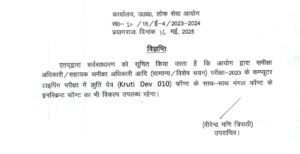UPSC Prelims News of 28 December 2022
Transparent Frog
Context: A study of the transparent frog could provide clues on how to prevent deadly blood clots.
About Transparent Frog:
- Also known as the glass frog of the Costa Rican rainforest, the amphibian is nearly transparent. Apart from a lime green smear across its back, its skin, muscle and other tissues are see-through.
- Transparent characteristics: When a glass frog falls asleep, almost all of its red blood cells retreat into its liver.
- They hide in the organ and allow the frog to achieve near invisibility during rest.

Study on the Frog:
- Hiding red blood cells: Researchers wanted to observe the changes when the frog was awake and asleep. They provoked the molecules within the red blood cells to release ultrasonic waves, which could be used to identify the contents and source.
- When the researchers were studying sleeping condition, they observed that the entire signal was coming from the liver. About 89% of the frogs’ red blood cells had packed themselves into liver.
- Prevention of clot: When red blood cells come together, they clot. The frog was able to prevent clots when all its red blood cells were packed inside the liver.
- The frog has developed an ability to control when their blood clots. If they are wounded, they allow clots to form.
- But when they are asleep, the red blood cells packed inside the liver form no clot.
Significance of the Study:
- The study can teach us about how to prevent clot formation in our own bodies. In future, it could lead to treatments to reduce deaths from clots in humans.
- The ability of the frog to breathe when all red blood cells are stored in liver indicates an alternative metabolism system, which can survive on low oxygen.
UPSC Prelims News 27 December 2022
Brain-Eating Amoeba
Context: South Korea has reported its first casualty of an infection caused by Naegleria fowleri or “brain-eating amoeba”.
Naegleria Fowleri:
- Naegleria is an amoeba and only one of its species, called Naegleria fowleri, can infect humans. The microorganism was first discovered in Australia in 1965 and is usually found in warm freshwater bodies, such as hot springs, rivers and lakes.
- Human Infection:
- The amoeba enters the human body through the nose and then travels up to the brain. This happens when someone dips their head in a freshwater body.
- In some cases, people get infected when they clean their nostrils with contaminated water.
- There is no evidence of spreading of Naegleria fowleri through water vapour or aerosol droplets.
- Effects: After entering human brain, the microbe destroys brain tissues and causes a dangerous infection known as primary amebic meningoencephalitis (PAM).
- Symptoms: The first sign of PAM is visible within one to 12 days after the infection. It is similar to symptoms of meningitis, which are headache, nausea and fever.
- Later effects include stiff neck, seizures, hallucinations, and even coma.
- Mortality: The infection spreads rapidly and on average causes death within about five days. The fatality of the infection is as such that only four people have survived out of 154 reported infected individuals in the US.
- Treatment: No effective treatments have been identified as yet. At present, doctors treat it with a combination of drugs, including amphotericin B, azithromycin, fluconazole, rifampin, miltefosine, and dexamethasone.
Rise in Infections:
- Scientists believe that due to rising global temperatures, the chances of getting Naegleria fowleri infection will go up as the amoeba mainly thrives in warm freshwater bodies.
- Heat wave conditions may also allow the amoeba to thrive, as they have shown survivability in high temperatures up to 46°C and more.
PRASHAD Scheme
Context: President of India inaugurated the project development of Srisailam Temple in the State of Andhra Pradesh.
Highlight
- The project has been sanctioned and executed under PRASHAD scheme.
- The components executed in the project include interventions like Amphitheatre, Illuminations and Sound and Light Show, Digital Interventions, Tourist Amenity Center, parking area, Changing rooms, Toilet Complexes, Souvenir Shops, Food court, ATM & Banking Facility
- The project aims to make Srisailam Temple a world class pilgrimage and tourist destination
About PRASHAD Scheme
- The ‘National Mission on Pilgrimage Rejuvenation and Spiritual, Heritage Augmentation Drive’ (PRASHAD) is a Central Sector Scheme with complete financial assistance by the Government of India.
- The scheme was launched by the Ministry of Tourism in the year 2014-15.
- Objective: Focused integrated infrastructure development to harness pilgrimage and heritage tourism destinations for its direct and multiplier effect upon employment generation and economic development.
About Srisailam Sri Mallikarjuna Swamy Temple
- It is dedicated to Lord Shiva and his consort Goddess Parvati and the only temple in India significant to both Saivism and Shaktism.
- The presiding deity of the place is Brahmaramba Mallikarjuna Swamy in natural stone formations in the shape of Lingam and is considered one of the 12 Jyotirlingas of Lord Shiva and one of the 18 Maha Shakti Peethas of the Goddess, Parvati.
- Temple is classified as one of the Paadal Petra Sthalam.
- The idol of Lord Mallikarjuna Swamy and Goddess Bhramaramba Devi are thought to be ‘Swayambhu’ or self-manifested, and the unique combination of Jyothirlingam and Mahasakthi in one complex is one-of-a-kind.
Veer Bal Diwas
Context: The Prime Minister participated in a historic programme marking ‘Veer Bal Diwas’ at Major Dhyan Chand National Stadium in Delhi.
About Veer Bal Diwas
- On 9th January 2022, the day of the Prakash Purab of Sri Guru Gobind Singh Ji, the Prime Minister had announced that 26th December would be observed as ‘Veer Bal Diwas’, to mark the martyrdom of sons of Sri Guru Gobind Singh – Sahibzadas Baba Zorawar Singh Ji and Baba Fateh Singh Ji.
About Sahibzadas Zorawar Singh and Fateh Singh
- Sahibzada Zorawar Singh (9) and Sahibzada Fateh Singh (7) are among the most revered martyrs in Sikhism.
- In 1704, Mughal soldiers besieged Anandpur Sahib on the orders of Emperor Aurangzeb.
- The two sons of Guru Gobind Singh were captured. They were offered safe passage if they became Muslims.
- They both refused, and so they were sentenced to death and were bricked alive. These two greats preferred death instead of deviating from the noble principles of Dharma.
About Guru Gobind Singh
- Guru Gobind Singh was the tenth Guru of Sikhism.
- Important contributions:
- Introduction of the turban to cover hair in Sikhism
- He also founded the principles of Khalsa or the Five ‘K’s which include are kesh (uncut hair), kanga (wooden comb), kara (iron or steel bracelet), kirpan (dagger) and kachera (short breeches).
- He fought against the Mughals in the battle of Muktsar in 1705.
- His literary contributions include the Jaap Sahib, Benti Chaupai, Amrit Savaiye, etc.


 UPPSC RO ARO Exam Date 2025 Out: Typing ...
UPPSC RO ARO Exam Date 2025 Out: Typing ...
 Maharashtra Bill to Curb Urban Naxalism,...
Maharashtra Bill to Curb Urban Naxalism,...
 International Maize and Wheat Improvemen...
International Maize and Wheat Improvemen...





















